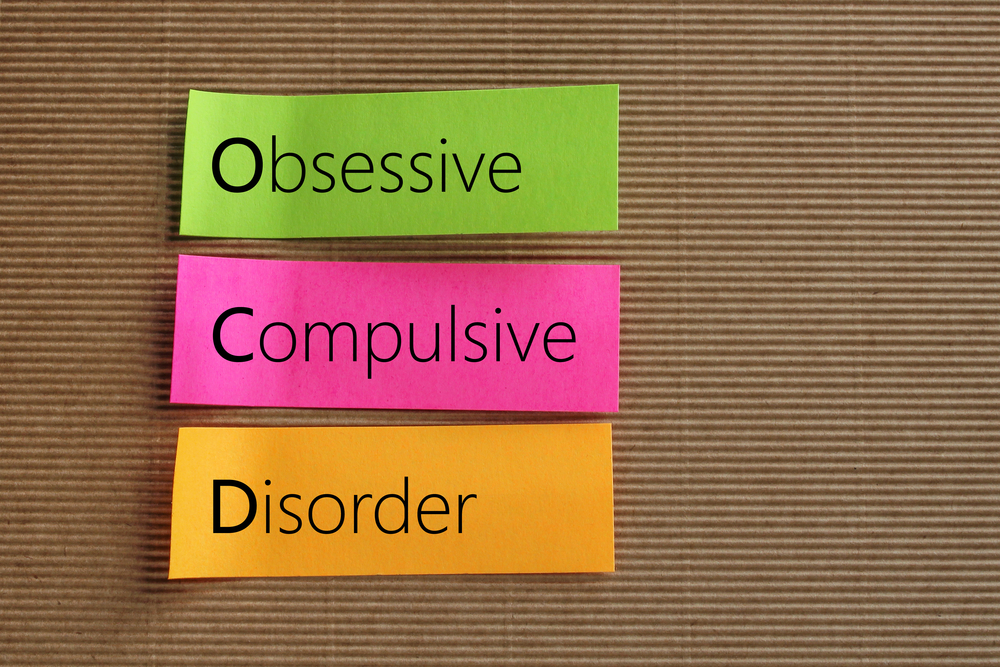10 Important Facts About OCD and Effective Tips for Relief
What is OCD, do you need professional treatment, and what are the most effective treatments to overcome it? Everything you need to know.
 (Photo: shutterstock)
(Photo: shutterstock)1. OCD (Obsessive-Compulsive Disorder) is a condition composed of two parts: obsessive thoughts and compulsive actions. To be diagnosed with OCD, these rituals and obsessions must interfere with function or take more than an hour a day, and the person must be aware that their actions or thoughts are irrational (with the exception of children).
2. Obsessive thoughts are distressing thoughts or images that repeatedly occur without control and cause significant discomfort. Typically, they contradict an individual's values, desires, or self-definition, or focus on potential harm to others or oneself. Sometimes the thoughts do not contradict one’s values or desires but are exaggerated, causing suffering and impairing function.
Compulsive rituals are actions that the person does not necessarily want to perform but feels compelled to do, experiencing significant distress if resisted. (For example, repeatedly checking electrical appliances to supposedly prevent a fire, washing hands numerous times a day, touching a particular object, and more)
3. Two key components of OCD are doubt and guilt. In the 19th century, OCD was called "the doubting disease." This name accurately describes the condition, as OCD can cause sufferers to doubt even the most basic aspects of themselves, others, or the world they live in. Guilt is another significant aspect of the disorder. It is easy for people with OCD to feel guilty about a wide range of things because they already feel responsible for matters no one else would assume responsibility for.
4. It is important to understand that most people experience intrusive thoughts and find themselves unable to avoid certain compulsions at times. However, not everyone is diagnosed with OCD. The difference between those who need treatment and those who occasionally experience such issues is the impact these intrusive thoughts or rituals have on quality of life.
5. About 80% of those suffering from OCD develop it before age 18, usually starting in adolescence, with cases in children being less common. The prevalence of the disorder is equal among genders.
6. In a response given by Rabbi Azaria Ariel to a student asking how to cope with religious compulsive rituals, the Rabbi illuminated the Torah's approach to disorders in general and OCD in particular. "OCD is a specific disorder that sometimes masquerades as a type of piety, while in reality it is a form of anxiety that is harmful to life as a whole and to the observance of commandments in particular," explains Rabbi Azaria. "According to the Torah, anyone facing mental imbalance must seek treatment, as the Rambam writes in Hilchot Deot (Chapter 2, Halacha 1). This is an independent mitzvah: a person is commanded to have a balanced personality, to be calm and composed, thus fulfilling the commandment 'You shall walk in His ways.' Not just 'As He is merciful, so shall you be merciful,' as the sages say, but also 'As He is calm, so shall you be calm.' Rabbi Azaria continues writing to the questioner that Rabbi Yehuda Halevi in the Kuzari (Third Article, A-E) describes the servant of Hashem 'as living with peace of mind and controlling his soul’s forces, harnessing them all for the service of Hashem in a thoughtful manner.'
7. It is advisable to seek a professional with proven experience in treating OCD. Rabbi Azaria notes that "since OCD often manifests related to religious matters in observant people, it is essential that the therapist is observant as well." Rabbi Azaria adds that sometimes it is worthwhile to consult a Rabbi for guidance, but this should be in addition to professional treatment, not as a substitute. He compares it to physical medicine, where the doctor sets the treatment plan, and the Rabbi can then advise on its observance on Shabbat, Yom Kippur, and so on.
 (Photo: shutterstock)
(Photo: shutterstock)8. Cognitive-behavioral therapy (CBT) is the most effective psychological treatment for obsessive-compulsive disorder, suitable for both adults and children. CBT retrains thinking patterns and habitual management, reducing the need for compulsive behavior.
One therapeutic approach is known as "exposure and response prevention." In therapy, the patient is gradually exposed to their obsessions or fears, such as dirt, and learns techniques and thought patterns to manage their anxiety effectively. Though the process requires time and effort, it ultimately leads to an improved quality of life and mastery over obsessive-compulsive thoughts.
9. Sometimes the treating physician will recommend medication. Certain medications can help control obsessive-compulsive behavior. In most cases, doctors will suggest antidepressants as the first step in treatment. Antidepressants may aid in treating the disorder because they increase levels of serotonin, a neurotransmitter associated with good mood, calm, and well-being, which is often deficient in people with obsessive-compulsive disorder.
10. Coping with Obsessive-Compulsive Disorder? Here are some tips to help:
A. Educate Yourself: Understanding the disorder can strengthen personal motivation to adhere to and persist with the treatment plan.
B. Join a Support Group: Support groups for people dealing with obsessive-compulsive issues allow them to share experiences with others facing the same challenges.
C. Stay Focused on Your Goals: Recovery from obsessive-compulsive disorder is an ongoing process, where maintaining focus on treatment goals is essential. This focus helps maintain the high motivation needed for successful treatment.
D. Relax and Relieve Stress: It is recommended to learn relaxation and stress management techniques, such as muscle relaxation and deep breathing, to help with overall calm.
E. Use Exercise to Channel Energy: Physical activity helps direct the energy and tension generated by the disorder, making the process of coping easier.

